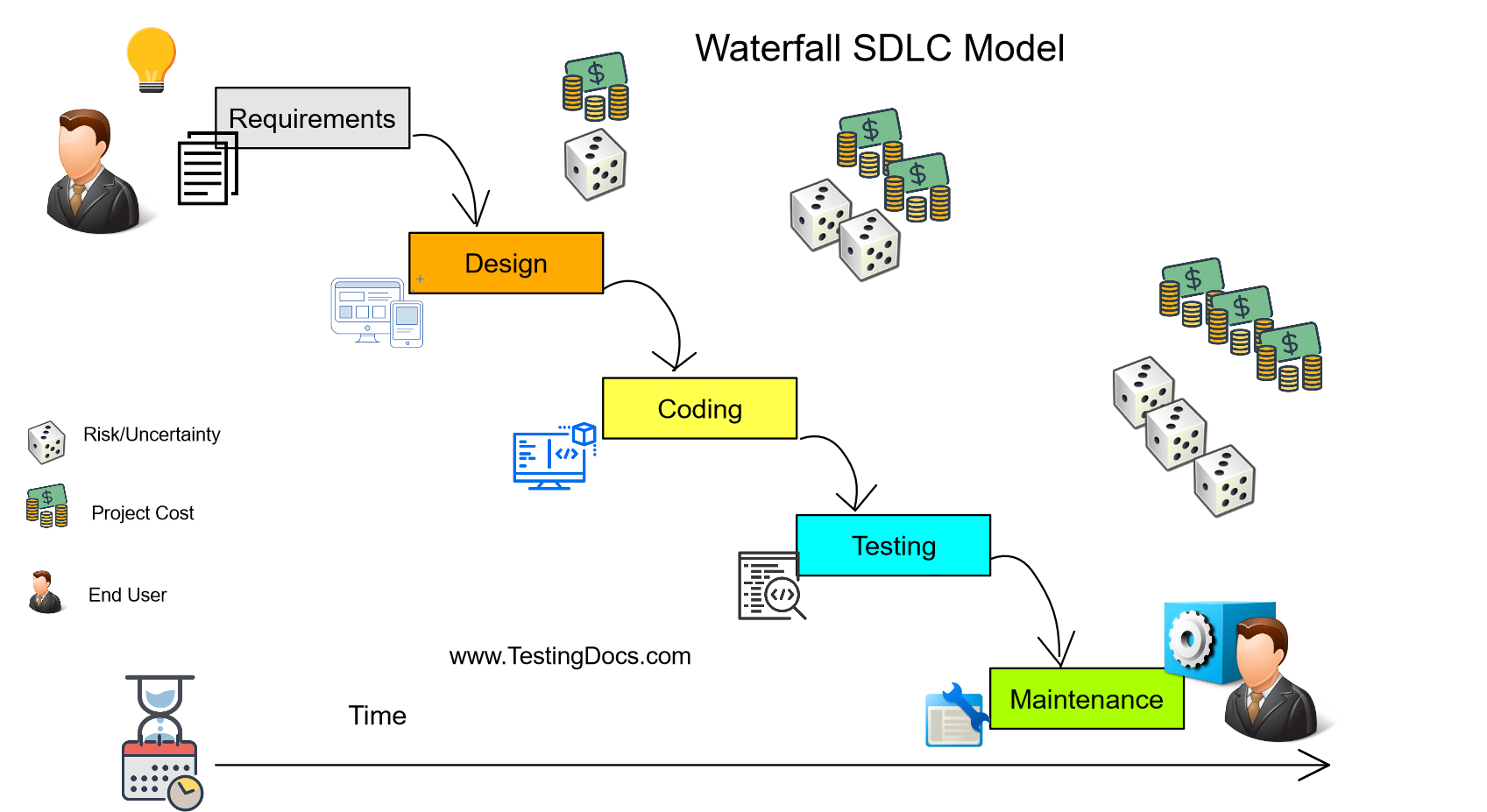Disadvantages of the Waterfall Model
Disadvantages of the Waterfall Model
The main disadvantages of the Waterfall Model in software development are as follows:
Ships only once
There are many disadvantages of this SDLC model. The main disadvantage of the Waterfall is that the customer gets the product at the end of all the phases. This model ships the product only once.
High Risk and Uncertainty
The software product is shipped to end user after all the phases are completed. As we can see that the project risk, project cost and uncertainty increases with time.

Requirements shouldn’t Change
This model is not suited for projects whose requirements are likely to change. Frozen requirements are extremely difficult in real projects.
This model is not suited for time sensitive and critical projects. Projects with no fixed requirements or with changing requirements, innovative and new idea projects.
Inflexibility
Once a phase is completed, it’s difficult and costly to go back and make changes. This makes it unsuitable for projects where requirements might change frequently.
Less adaptive
The waterfall model cannot adapt to any changes to the artifacts. If a customer sends requirements in between, then the whole process should start from the first phase. It leads to higher costs and time consuming process.
Idle Resources
Resources would be idle in this model. For Example, QA Team would be idle during the coding phase and the support team would be idle until the maintenance phase.
Each phase starts after the completion of the earlier phase. For example, testing only starts after the completion of the coding phase. Testing begins only after the development is complete. This can lead to the discovery of major issues late in the process, making them harder and more expensive to fix. We cannot move to the next phase until the previous stage is completed.
Not Ideal for Complex Projects
Waterfall is best suited for short-term, well-defined projects. It struggles with large-scale or evolving systems.
Client Involvement is Low
There is minimal customer involvement after the requirement phase, which may lead to a product that doesn’t fully meet the user’s needs.
Difficult to Estimate Time/Cost Accurately
Because issues are not visible early on, it’s challenging to give reliable estimates during the early phases.
